Borstal Institutions
In the second half of the 19th century, there were major developments on how young offenders were dealt with. For those up to the age of sixteen, the new Reformatory system provided an alternative to prison, with Industrial Schools performing a similar role for those viewed as in danger of becoming criminals or whose wayward behaviour needed a corrective environment.
In 1895, a report on the prison system by the Gladstone Committee proposed that a special type of institution be created to deal with offenders aged from 16 to 21. An experimental scheme was set up at Bedford Prison in 1899, and then extended in 1901 using part of the convict prison at Borstal in Kent. The young inmates were kept apart from the adult prisoners and given a routine which included physical exercise, school lessons, work training, strict discipline and follow-up supervision after their discharge.
The formal adoption of the borstal system came in the 1908 Prevention of Crime Act. Borstal sentences were for between two and three years, with release on licence being possible for those considered to have made sufficient progress. A second borstal institution for boys was established at Feltham in 1910 (in the premises of the former Middlesex Industrial School), and another at Portland prison in 1921, with one for girls being set up at Aylesbury prison in 1909. Some existing prisons implemented a 'modified borstal' system, providing accommodation and treatment for those serving short sentences.
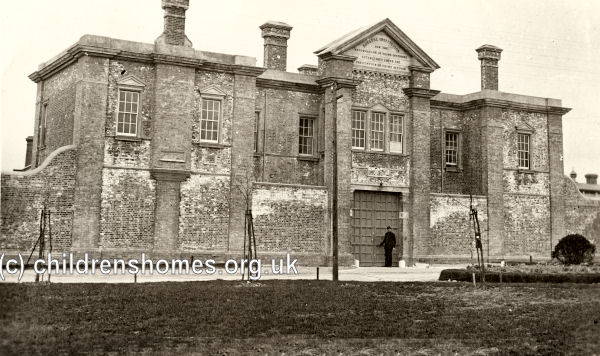
Borstal Institution, Borstal, c.1910. © Peter Higginbotham
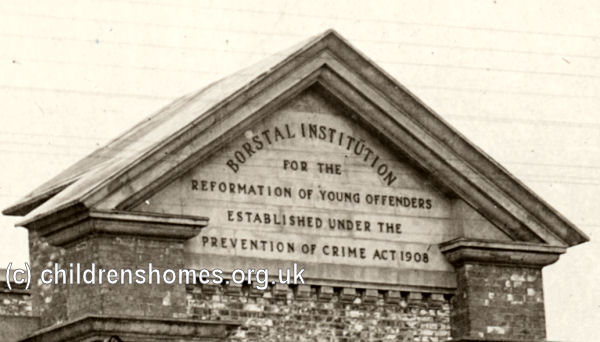
Borstal Institution (detail), Borstal, c.1910. © Peter Higginbotham
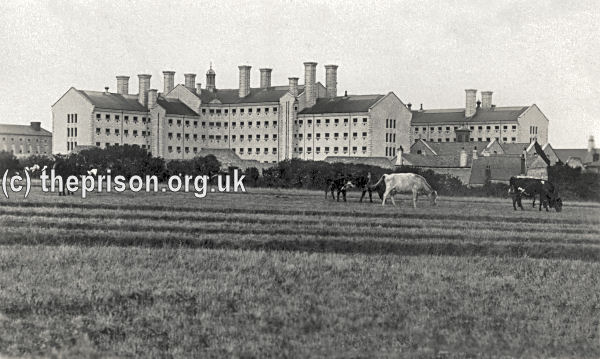
Borstal Institution, Borstal, 1920s. © Peter Higginbotham
The object of the borstal system was the all-round development of character and capacities — moral, mental, physical and vocational — with particular emphasis on the development of and self-control through trust increasing with progress. Conditions in borstals were intended to be as unlike those of a prison as was compatible with compulsory detention.
From the mid-1920s, borstal inmates were allocated to 'houses', with up to fifty in each group. This both encouraged the building of a closer relationship between inmates and their Housemaster or House staff, and also fostered a team spirit within each House. The training regime was based around a progression through a series of grades, usually three in number. The first grade, typically lasting four to six months, was a period of preliminary training and observation. The second, or training, grade gave a few extra privileges, such as permission to join certain clubs, or the Cadet Force, or to go on occasional escorted walks or outings. This stage continued until the individual demonstrated a response to their training and fitness to be trusted. Promotion to the third grade resulted in much greater status, such as being able to work without supervision, to join all clubs and institution activities, to go alone on walks or to a local cinema or youth club, to go out to tea with visiting parents, to take charge of a party of junior boys and to become eligible for home leave.
Borstal boys were expected to do a solid eight hours' work each day and could receive training in a wide variety of practical skills such as carpentry, sheet-metal work, bricklaying, boot- and shoemaking, farming, horticulture and cookery. Work for the girls centred on domestic crafts such as dressmaking, laundering, housework, cooking and farm and garden work. Cookery proved particularly popular and by the 1930s borstals were offering six-month-long training courses in 'simple cookery', leading to an examination by the Universal Cookery and Food Association. A course was also offered in 'nautical cooking' — presumably aimed at young men.
Recreation options for inmates typically included a wide range of sporting activities, camping trips, amateur dramatics, play readings, music societies, wireless and gramophone clubs or, even at one boys' borstal in 1951, a television club.
For miscreants, corporal punishment was explicitly excluded. Instead the options included reduction in privileges, reduction in grade, restriction in diet, stoppage of earnings, or a period of confinement to a room.
In 1930, a party of forty boys from Feltham Borstal, marched 132 miles to Lowdham Grange, near Nottingham, to begin construction of what became the first 'open' borstal, which lacked the usual walls or barbed wire perimeter.
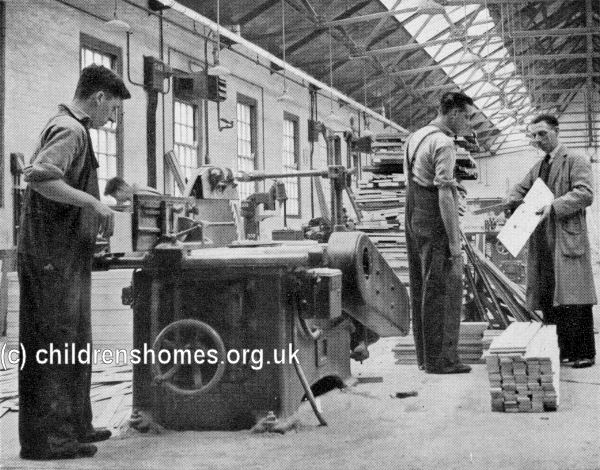
Lowdham Grange Borstal Institution, 1940s. © Peter Higginbotham
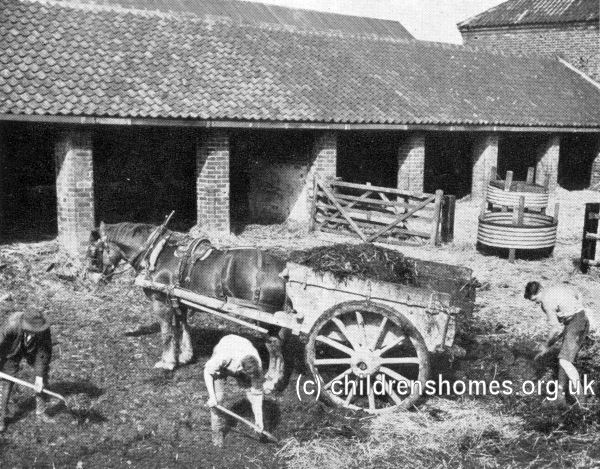
Lowdham Grange Borstal Institution, 1940s. © Peter Higginbotham
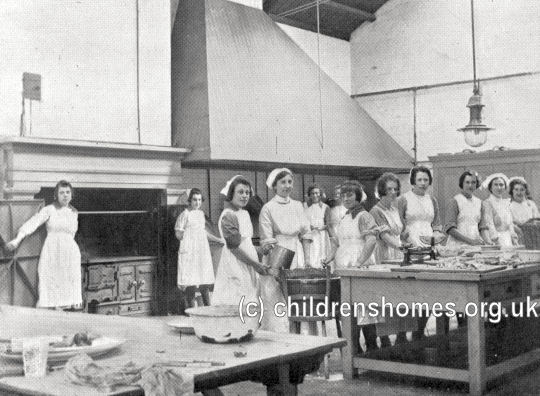
Aylesbury Borstal Institution for Girls, 1940s. © Peter Higginbotham
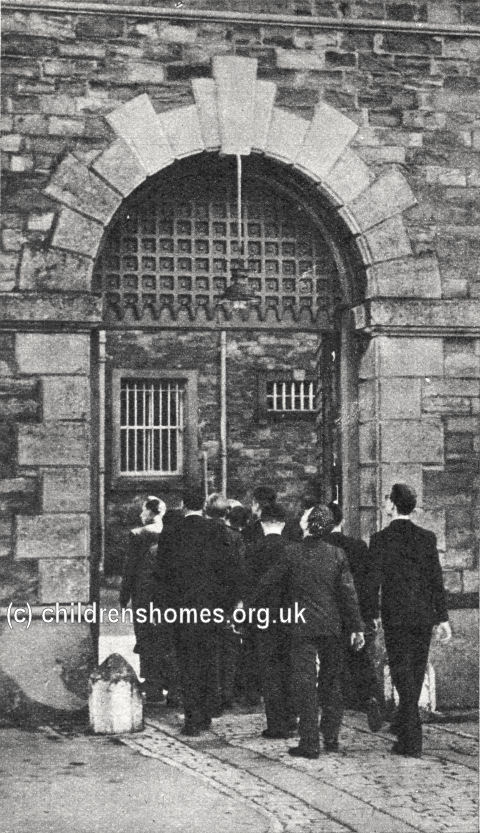
Usk Borstal Camp, 1940s. © Peter Higginbotham
In 1983, Borstals and Young Prisoner Centres (the latter usually being separate accommodation in adult prisons rather than separate establishmnents) were merged and rebranded as Youth Custody Centres (YCCs). In 1988, YCCs and Youth Detention Centres were consolidated and replaced by Young Offender Institutions.
Bibliography
- Fox, Lionel W The English Prison and Borstal Systems (1952, Routledge & Kegan Paul)
- Behan, Brendan Borstal Boy (1958, Hutchinson)
- Hutton, John Portland Borstal Institutution Miscellany Volume 2 (2018)
- Lodge, Jeremy Lowdham Grange. Borstal! (2014)
Except where indicated, this page () © Peter Higginbotham. Contents may not be reproduced without permission.



